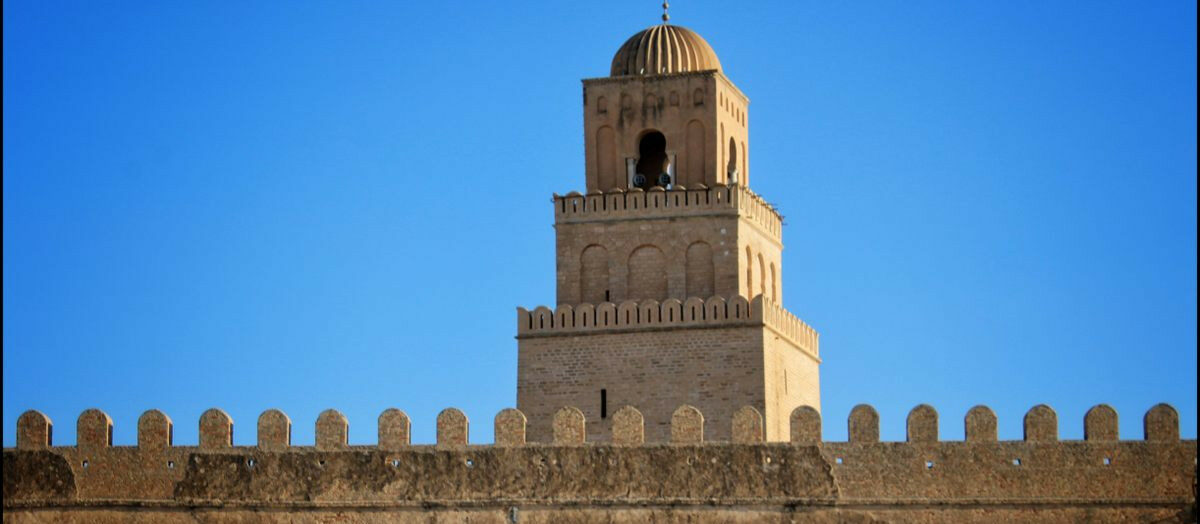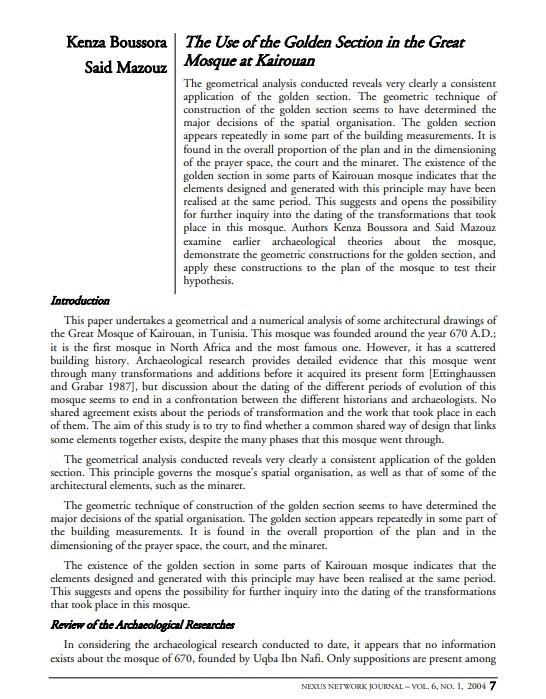

The geometrical analysis conducted reveals very clearly a consistent application of the golden section. The geometric technique of construction of the golden section seems to have determined the major decisions of the spatial organisation. The golden section appears repeatedly in some part of the building measurements. It is found in the overall proportion of the plan and in the dimensioning of the prayer space, the court and the minaret. The existence of the golden section in some parts of Kairouan mosque indicates that the elements designed and generated with this principle may have been realised at the same period. This suggests and opens the possibility for further inquiry into the dating of the transformations that took place in this mosque. Authors Kenza Boussora and Said Mazouz examine earlier archaeological theories about the mosque, demonstrate the geometric constructions for the golden section, and apply these constructions to the plan of the mosque to test their hypothesis.
Boussora, K., Mazouz, S. The Use of the Golden Section in the Great Mosque at Kairouan. Nexus Network Journal 6, 7–16 (2004).
I agree to the terms outlined below:
You agree to upload and assign Mosqpedia Database the rights to use the content worldwide and in perpetuity across all current and future media platforms. Mosqpedia Database may edit, copy, adapt and translate your contribution.
The content will be distributed under the Creative Commons Attribution-Deed – Attribution-NonCommercial-NoDerivatives 4.0 International – Creative Commons
All data will be stored in line with data protection regulations.